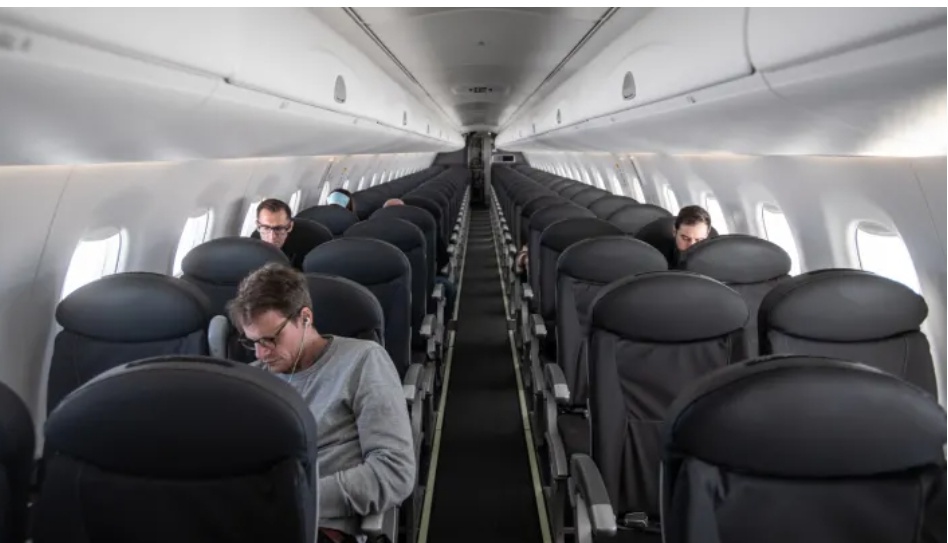The aviation industry, a crucial driver of global connectivity, has faced growing scrutiny in recent years due to its environmental impact. Among the emerging concerns is the phenomenon of “ghost flights” — flights that operate with little to no passengers or cargo. This article explores the concept of ghost flights and delves into their implications on the environment, shedding light on the complex intersection of travel demand, economic factors, and environmental sustainability.
Understanding Ghost Flights
Ghost flights, also known as empty or phantom flights, refer to instances where airplanes operate without a sufficient number of passengers or cargo to justify the journey. These flights often occur for various reasons, such as airlines attempting to maintain flight schedules, meeting regulatory requirements, or repositioning aircraft.
The Environmental Toll
Ghost flights pose a considerable environmental threat, contributing to carbon emissions, fuel consumption, and overall air pollution. The impact is exacerbated by the fact that these flights serve no practical purpose in terms of passenger transportation or cargo delivery, making them a particularly wasteful practice in the context of environmental conservation.
The aviation industry is a significant contributor to global carbon emissions, and ghost flights add an unnecessary burden to this already critical issue. The emissions from aircraft combustion engines release greenhouse gases, including carbon dioxide (CO2), into the atmosphere, contributing to climate change. The environmental toll of ghost flights becomes even more alarming when considering that these emissions occur without any tangible benefits in terms of passenger travel or cargo transport.
Economic Factors and Ghost Flights
Several economic factors contribute to the prevalence of ghost flights. Airlines often face financial penalties or lose valuable airport slots if they cancel scheduled flights. As a result, some carriers opt to operate empty flights rather than cancel them, incurring the environmental cost to avoid economic repercussions.
In some cases, airlines find it more cost-effective to operate ghost flights than to leave aircraft grounded. This decision is driven by the desire to maintain routine maintenance schedules, comply with leasing agreements, and avoid potential financial losses associated with aircraft inactivity.
Examples of Ghost Flights
The COVID-19 pandemic brought global air travel to a near standstill, leading to a surge in ghost flights. Airlines, struggling with reduced passenger demand, faced challenges in adjusting flight schedules promptly. Consequently, empty flights became more prevalent as airlines sought to maintain their schedules, meet regulatory requirements, and avoid penalties.
Another example is the Brexit. In anticipation of the United Kingdom’s departure from the European Union, airlines undertook precautionary measures, such as repositioning aircraft and ensuring operational continuity. This resulted in instances of empty or partially empty flights, adding to the environmental impact without directly benefiting passengers or cargo transport.
Addressing the Issue
Efforts to mitigate the environmental impact of ghost flights require a collaborative approach involving airlines, regulatory bodies, and environmental advocates. Some potential solutions include:
Flexibility in Regulations:
Regulators could consider more flexible policies that allow airlines to adjust schedules in response to changing demand without facing severe penalties. This would incentivize responsible decision-making based on economic and environmental considerations.
Innovative Scheduling Practices
Airlines can explore innovative scheduling practices, such as dynamic ticket pricing, to better align flight schedules with fluctuating demand. This approach would encourage more efficient resource allocation and reduce the need for empty flights.
Advancements in Technology:
Continued advancements in aircraft technology, such as the development of more fuel-efficient planes and sustainable aviation fuels, can contribute to reducing the overall environmental impact of air travel.
Conclusion
Ghost flights represent a stark example of the delicate balance between economic interests and environmental responsibility within the aviation industry. As the world strives to address climate change and transition toward a more sustainable future, the impact of unnecessary flights on the environment cannot be overlooked. By fostering collaboration among stakeholders, implementing flexible regulations, and embracing technological advancements, the aviation industry has the potential to minimize the environmental toll of ghost flights while maintaining operational efficiency. Balancing economic imperatives with ecological stewardship is crucial for ensuring the long-term sustainability of global air travel.

